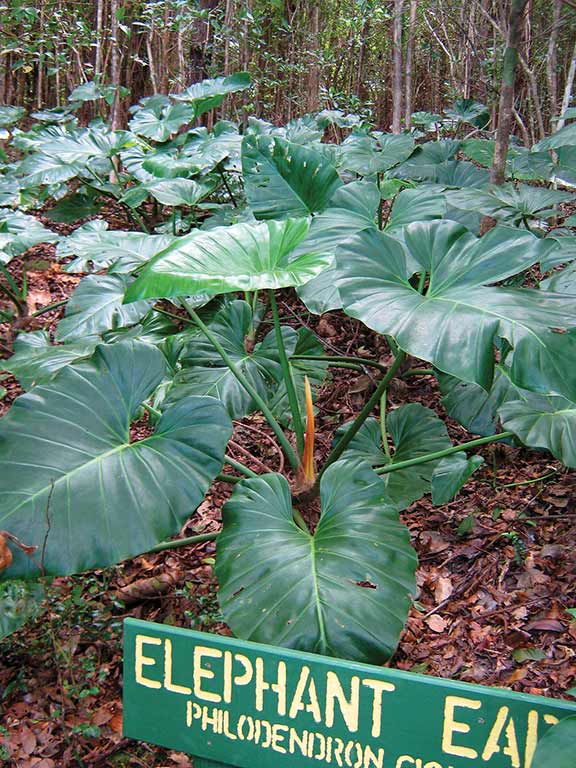Hikers at Sage Mountain National Park (Sage Mountain Rd., 284/494-2069, adults $3, children $1) can climb to the highest point in the U.S. and British Virgin Islands, 1,716 feet above sea level. The 92-acre park in west-central Tortola is also home to scenic overlooks, a forest untouched for over 500 years, and a host of delightful tropical trees, flowers, and animals.

Giant elephant ears at Sage Mountain National Park. Photo © Susanna Henighan Potter.
Sage Mountain is almost always cool and damp; the air here can be a real relief on hot days.The National Parks Trust has erected dozens of signs that identify trees and plants along the trails, including the West Indian mahogany, elephant-ear vine, and bulletwood tree. Bromeliads, air-dwelling tropical plants, bejewel the forest canopy and ferns carpet its floor. Visitors will hear the sounds of resident birds and bo-peeps, one of the most common kinds of tree frogs. You may also catch glimpses of the fast-moving bananaquit, a tiny yellow-breasted bird, and will certainly see lizards.The entrance to Sage Mountain National Park is about 0.3 mile from the parking lot, at the end of an unpaved road that cuts through private property. Once inside the park, you can choose to follow the North Trail, which descends slightly before passing through some of the oldest and most lush parts of the forest; the South Trail, which cuts through drier forest; or the Central Trail, which follows the spine of the ridge. All three trails meet at a giant old fig tree at the western end of the park. Other trails track eastward from the park entrance and climb past an impressive lookout to the highest point in the park.
Shelters have been built at several spots along the trails, and there is a picnic table on the North Trail just past the park entrance. There is a pit toilet about midway along the Central Trail. Brochures, which include a map of the park, are sometimes available at the park entrance, and there is a map on display at the parking lot.
Sage Mountain is almost always cool and damp; the air here can be a real relief on hot days. Wear sturdy shoes and plan to spend about two hours to see most of the park.
Excerpted from the Sixth Edition of Moon U.S. & British Virgin Islands.